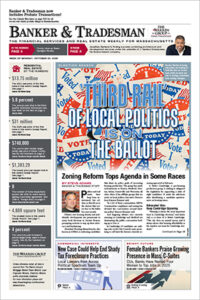Adoption of new zoning to comply with the MBTA Communities housing production law would generate a potential 10,000 multifamily units in Newton, most of which would be clustered around transit stops.
Like other communities with MBTA rapid transit service, Newton faces a Dec. 31 deadline to comply with the state law designed to address Massachusetts’ housing affordability crisis. The city is required to adopt zoning allowing at least 8,330 housing units by-right within a half-mile of transit stations.
“This is not as ambitious as we wish it would be,” said Greg Reibman, CEO of the Charles River Regional Chamber. “But both sides might be happy here, which means maybe it’s on the right track.”
The zoning proposal, submitted by the city’s Department of Planning and Development last week to the Newton City Council, allows 35 units per acre in four new zoning districts with slightly different densities and dimensional requirements. Maximum building heights range from 45 to 72 feet.
The new zoning covers a total land area of 288 acres. Most of the new zoning districts are near transit stations including the Waban, Eliot, Newton Highlands and Newton Centre stops on the Green Line, commuter rail stations in Auburndale, West Newton and Newtonville, along with areas such as Nonantum and Newton Corner.
Public comments on an earlier version – which would have created a maximum of just 3,500 housing units – included support for preservation and reuse of existing buildings, requiring sufficient parking for businesses and concerns that the guidelines would encourage teardowns, according to materials submitted by the Department of Planning and Development.
The median single-family home price in Newton topped $1.45 million during the first three months of 2023, according to data compiled by The Warren Group, publisher of Banker & Tradesman, up from $1.35 million during the same period in 2022. Median condominium prices were virtually unchanged at $815,000.
The MBTA Communities law – which applies to 175 Massachusetts communities – provided the impetus for the changes after years of delays on potential citywide and village district rezoning, Reibman said.
The proposal is likely to become a major issue in the local election this fall, with candidates for city council weighing in on potentially more aggressive housing goals, as well as opposition to the current plan, Reibman said.
Brookline officials are considering the rezoning the Harvard Street corridor from Coolidge Corner to the Allston line, which could clear the way for construction of nearly 7,000 housing units.
Last month, Lexington town meeting approved new overlay zoning districts for 227 acres, adding housing to allowed uses in commercial areas such as Massachusetts Avenue, Bedford Street and Waltham Street.








